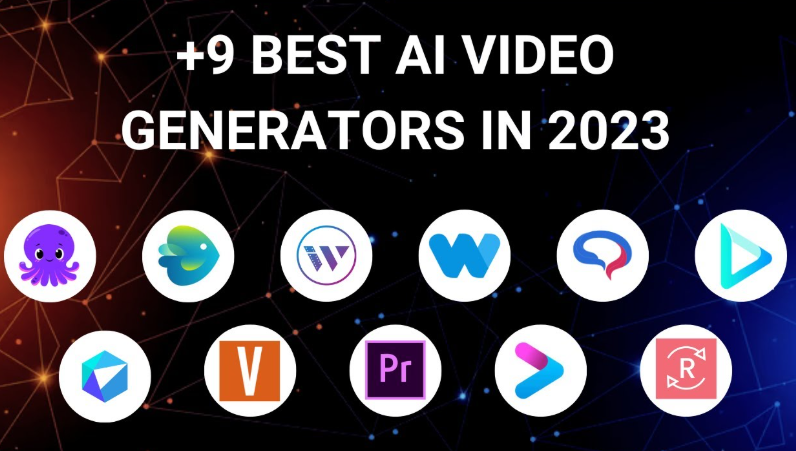Struggling to bring your still images to life or finding video creation too time-consuming? AI image-to-video tools are revolutionizing content creation, making dynamic visuals accessible to everyone.
What You'll Learn:
- The fundamentals of AI image-to-video technology and its growing importance.
- A deep dive into the top 7 AI image-to-video tools for creators in 2025.
- Practical tips and best practices for generating high-quality AI videos.
- A step-by-step guide to creating your first AI-powered video.
- How to overcome common challenges in AI video generation.
Understanding AI Image to Video in 2025
The landscape of digital content is constantly evolving, with video continuing its reign as the most engaging format. For creators, marketers, and storytellers, the ability to quickly and efficiently produce compelling video content is paramount. This is where AI image-to-video technology steps in, bridging the gap between static visuals and dynamic motion.
What Exactly is AI Image to Video?
AI image-to-video is a sophisticated technology that utilizes artificial intelligence, particularly deep learning models, to transform still images into short video clips. Instead of manually animating each element of an image, AI algorithms analyze the content, context, and potential for motion within the image to generate realistic or stylized animations. This can range from subtle movements like swaying trees or flowing water to more complex transformations that imbue characters with life or scenes with dynamic action.
How AI Transforms Static Images into Motion
The process typically involves several key AI techniques:
- Object Recognition and Segmentation: The AI first identifies and separates different objects or elements within an image (e.g., a person, a car, a background).
- Motion Prediction: Based on its training data, the AI predicts how these elements would naturally move in a real-world scenario. This might involve understanding physics, common human gestures, or environmental factors.
- Frame Generation: Using generative adversarial networks (GANs) or diffusion models, the AI then generates intermediate frames between the initial image and the predicted motion, creating a smooth video sequence.
- Style Transfer (Optional): Some tools can also apply stylistic elements, mimicking different artistic styles or adding specific visual effects to the generated video.
The Growing Demand for AI Video Generation in 2025
In 2025, the demand for AI-generated video is set to surge across various sectors:
- Social Media Marketing: Brands and influencers need a constant stream of engaging video content. AI tools offer a faster, more cost-effective way to produce short, attention-grabbing clips.
- Content Creation: Bloggers, educators, and independent creators can enhance their content with dynamic visuals without needing advanced video editing skills or expensive equipment.
- E-commerce: Product showcases can be made more compelling with animated product images that highlight features or demonstrate usage.
- Personalized Content: AI can generate personalized video messages or explainers tailored to individual users.
“AI image-to-video is democratizing video creation. It empowers individuals and small businesses to compete with larger entities by producing professional-looking video content rapidly and affordably.” – Sarah Chen, Digital Marketing Strategist
Top 7 AI Image to Video Tools to Explore in 2025
Choosing the right AI tool can significantly impact your workflow and the quality of your output. Here are some of the leading platforms that creators should have on their radar in 2025.
RunwayML: A Creator's Best Friend for AI Video
RunwayML is a comprehensive creative suite that includes powerful AI magic tools, with its Gen-2 model being a standout for image-to-video generation. It offers a user-friendly interface and a wide range of customization options, allowing users to generate videos from text prompts, images, or existing video clips.
- Key Features:
- Text-to-video and image-to-video generation.
- Extensive editing tools within the platform.
- Advanced control over motion and style.
- Regular updates with new AI models and features.
Pika Labs: Simplicity Meets Sophistication
Pika Labs has rapidly gained traction for its intuitive design and impressive results, particularly for users who want quick, high-quality animations from their images. It's known for its ability to generate expressive and dynamic motion with relative ease.
- Key Features:
- User-friendly interface, often accessible via Discord.
- High-quality animation from static images.
- Supports various aspect ratios.
- Active community for sharing tips and inspiration.
Stability AI's Stable Video Diffusion: Cutting-Edge Technology
Building on the success of Stable Diffusion for image generation, Stability AI's Stable Video Diffusion offers a powerful, open-source approach to image-to-video. This technology is often integrated into other platforms or can be run locally for those with the technical expertise.
- Key Features:
- State-of-the-art AI models.
- High degree of control for advanced users.
- Potential for fine-tuning and customization.
- Open-source nature fosters innovation.
Other Notable AI Image to Video Platforms for Creators
Beyond the top contenders, several other platforms offer unique capabilities:
- Synthesys: Known for its AI video generation with realistic avatars and voiceovers, it can also animate existing images to create dynamic content.
- HeyGen: Primarily focused on AI avatar videos, HeyGen allows for the animation of static images to create talking heads or character-driven scenes.
- DeepMotion: While often used for 3D character animation from video, its underlying motion capture and AI analysis can be adapted for creative image-to-video applications.
- Kaiber.ai: This platform excels at transforming static images into visually stunning, often artistic, video animations with a focus on creative expression.
Here's a quick comparison of some of these leading tools:
| Feature / Tool | RunwayML (Gen-2) | Pika Labs | Stable Video Diffusion | Kaiber.ai |
| Ease of Use | Moderate | High | Low (for raw models) | High |
| Customization | High | Moderate | Very High | High |
| Output Quality | Excellent | Very Good | Excellent | Excellent |
| Learning Curve | Moderate | Low | High | Low |
| Primary Use Case | All-around creator tool | Quick, engaging animations | Advanced research/customization | Artistic, stylized videos |
| Pricing Model | Subscription | Freemium/Paid | Open Source/API costs | Subscription |
Best Practices for Stunning AI-Generated Videos in 2025
Simply uploading an image and hitting “generate” might yield results, but to create truly impactful videos, a strategic approach is key.
Optimizing Your Input Image for Best Results
The quality of your output is directly proportional to the quality of your input.
- High Resolution: Use clear, high-resolution images. Blurry or pixelated images will lead to poor animation.
- Clear Subject: Images with a well-defined subject and clear foreground/background separation tend to animate better.
- Composition: Consider how elements within the image can naturally move. Images with implied motion (e.g., a person in mid-stride, a flag waving) often translate well.
- Avoid Clutter: Overly busy images can confuse the AI, leading to unpredictable motion.
Setting Clear Animation Goals for AI
Before you start generating, know what you want to achieve:
- Define the Motion: Do you want subtle environmental movement, character animation, or a dramatic scene transformation?
- Specify Mood/Style: Are you aiming for a realistic, dreamlike, energetic, or serene feel?
- Identify Key Elements: Which parts of the image should be animated, and how should they move?
Leveraging Subtle Motion for Impact
Often, less is more. Instead of overwhelming the viewer with excessive movement, focus on subtle, natural-looking animations:
- Breathing or slight shifts in posture for characters.
- Gentle swaying of leaves or fabric.
- Subtle changes in lighting or atmospheric effects.
“The most effective AI videos often use motion to enhance the existing narrative or emotion of the image, rather than creating entirely new, distracting elements.” – Alex Kim, AI Content Specialist
Maintaining Style Consistency in Your Videos
If you're creating a series of videos, consistency is crucial for branding and viewer recognition.
- Use similar input image styles.
- Apply consistent animation parameters across different generations.
- Consider using AI style transfer if your tool supports it to maintain a cohesive aesthetic.
Step-by-Step: Creating Videos from Images with AI in 2025
Let's walk through the general process of bringing a static image to life using an AI image-to-video tool. While interfaces vary, the core steps remain consistent.
Step 1: Uploading Your Image and Setting Parameters
- Select your tool: Choose from the platforms mentioned above or another AI video generator.
- Locate the “Image to Video” or “Generate Video” feature.
- Upload your chosen image.
- Define initial parameters: This might include aspect ratio, resolution, or basic style presets. Some tools also allow for text prompts to guide the AI's interpretation of the image.
Step 2: Choosing Animation Styles and Intensity
This is where you dictate the motion.
- Select Animation Type: Tools might offer presets like “camera pan,” “object movement,” “character animation,” or “stylized effects.”
- Adjust Intensity: Control how much or how little the elements move. A slider for “motion intensity” is common.
- Masking (Advanced): Some platforms allow you to mask specific areas of the image to dictate where motion should occur or be restricted.
Step 3: Previewing and Refining Your Video
Most AI tools provide a preview or a draft generation.
- Review the generated clip: Watch the video to see if it matches your expectations.
- Iterate: If the motion isn't right, adjust the parameters (intensity, style, prompt) and regenerate. This is often an iterative process.
- Experiment: Don't be afraid to try different settings to see what works best for your specific image.
Step 4: Exporting Your Final AI-Generated Video
Once you're satisfied with the animation:
- Select Export Options: Choose your desired video format (e.g., MP4, MOV), resolution, and frame rate.
- Download: Save the final video file to your device.
Overcoming Common Challenges in AI Video Creation
While AI tools are powerful, they aren't always perfect. Here are common issues and how to address them.
Addressing Unnatural or Jerky Motion
This can happen when the AI struggles to interpret the image or when motion intensity is too high.
- Reduce Motion Intensity: Start with subtle movements and gradually increase if needed.
- Refine Input Image: Ensure the image has clear subjects and logical areas for motion.
- Try Different AI Models/Tools: Some models are better at specific types of motion.
- Post-Processing: Minor edits in traditional video editing software can sometimes smooth out jerky transitions.
Preventing Loss of Image Integrity
Sometimes, AI can alter or distort parts of the original image during animation.
- Focus on Subtle Animation: Avoid drastic transformations that might require the AI to “invent” too much.
- Use Image-to-Video Specific Tools: Platforms designed for this task are often better at preserving image fidelity.
- Check Tool Settings: Some tools have options to prioritize image preservation over dynamic motion.
Ethical Considerations and Copyright in 2025
As AI video generation becomes more prevalent, ethical and legal questions arise:
- Copyright of Input Images: Ensure you have the rights to use the images you upload. Using copyrighted material without permission can lead to legal issues.
- AI-Generated Content Ownership: The legal framework around AI-generated content is still evolving. Understand the terms of service of the AI tool you use regarding ownership and usage rights.
- Misinformation and Deepfakes: Be mindful of the potential for misuse. Always use these tools responsibly and ethically, clearly labeling AI-generated content where appropriate.
“Creators must be vigilant about the source of their input images and transparent about the AI-generated nature of their final videos to maintain trust and avoid ethical pitfalls.” – Dr. Anya Sharma, AI Ethics Researcher
FAQ (Frequently Asked Questions)
Q: How long does it typically take to generate a video from an image using AI?
A: Generation times can vary significantly depending on the complexity of the animation, the tool used, and server load. Most tools provide a preview within seconds to minutes, with final renders taking a few minutes to longer for high-resolution outputs.
Q: Can I animate any type of image?
A: While most AI image-to-video tools can handle a wide range of images, those with clear subjects, good lighting, and distinct elements tend to produce the best results. Highly abstract or blurry images may yield less predictable outcomes.
Q: Do I need to be a professional video editor to use these tools?
A: Absolutely not! A major advantage of AI image-to-video tools is their accessibility. Many are designed with user-friendly interfaces, making them suitable for beginners with no prior video editing experience.
Q: What is the difference between text-to-video and image-to-video AI?
A: Text-to-video AI generates video content solely based on a written description. Image-to-video AI takes an existing static image as a starting point and animates it, often using text prompts to guide the motion and style.
Q: Can I animate specific parts of an image, like just the eyes or hair?
A: Some advanced AI tools offer masking or region-specific controls that allow you to designate which parts of the image should be animated and how. This provides a higher degree of creative control.









